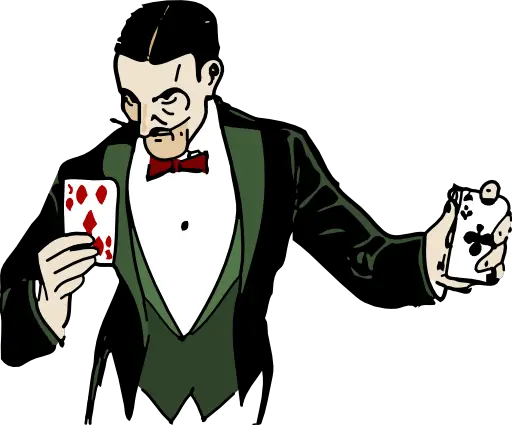Support our educational content for free when you purchase through links on our site. Learn more
[2023] The Art of Cognitive Deception: Tricks to Make Your Brain Believe Anything
Have you ever wondered how your brain can be easily tricked into believing something that isn't true? It's a fascinating phenomenon that we like to call the art of cognitive deception. In this article, we will explore the various ways in which our brains can be manipulated and provide you with tips and tricks to train your mind to believe in something. So, get ready to dive deep into the world of mind tricks and learn how to master the art of cognitive deception!
Table of Contents
- Quick Answer
- Quick Tips and Facts
- Is Your Brain Playing Games with You?
- 1. Biased Brain
- 2. The Blame Game
- 3. Your Brain is Lazy
- 4. Your Brain Misses Out on Obvious Things
- 5. Imagination Tricks
- FAQ
- Conclusion
- Recommended Links
- Reference Links
Quick Answer
The act of tricking your brain into believing something that isn't true is known as cognitive deception. It involves exploiting the brain's natural biases, cognitive shortcuts, and susceptibility to suggestion. By understanding the mechanisms behind cognitive deception, you can learn to recognize and overcome these tricks. Training your mind to believe in something requires practice and a deep understanding of how your brain works.
Quick Tips and Facts
- Cognitive deception is the act of tricking your brain into believing something that isn't true.
- Confirmation bias is one of the most common cognitive biases that can lead to cognitive deception.
- Positive affirmations and visualization techniques can help train your mind to believe in something.
- Meditation and mindfulness practices can improve your ability to recognize cognitive deception.
- Critical thinking and skepticism are essential tools for avoiding cognitive deception.
Now, let's take a closer look at the different ways in which your brain can be tricked into believing something that isn't true.
Is Your Brain Playing Games with You?
Our brains are incredibly powerful and complex organs, but they are not immune to manipulation. In fact, our brains are constantly playing tricks on us, leading us to believe things that may not be true. From cognitive biases to perceptual illusions, our brains are susceptible to a wide range of tricks and manipulations. In the following sections, we will explore some of the most common ways in which our brains can deceive us.
1. Biased Brain
One of the most significant factors that contribute to cognitive deception is our brain's natural biases. Our brains are wired to favor information that confirms our existing beliefs and ignore or dismiss information that contradicts them. This cognitive bias is known as confirmation bias. It can lead us to seek out information that supports our preconceived notions while disregarding evidence that challenges them. Recognizing and overcoming confirmation bias is crucial to training your mind to believe in something.
To combat confirmation bias, try the following techniques:
- Seek out diverse perspectives: Expose yourself to different viewpoints and opinions to challenge your existing beliefs.
- Question your assumptions: Actively question your own beliefs and be open to changing your mind based on new evidence.
- Fact-check information: Verify the accuracy of information before accepting it as true.
2. The Blame Game
Another way in which our brains can deceive us is by shifting blame onto external factors. When something goes wrong, our brains often look for external causes rather than taking responsibility. This cognitive bias is known as the fundamental attribution error. It can lead us to attribute our successes to internal factors (our own abilities) and our failures to external factors (bad luck or other people's actions).
To overcome the fundamental attribution error and train your mind to believe in something, try the following strategies:
- Take responsibility: Acknowledge your role in both your successes and failures.
- Consider alternative explanations: Challenge your initial instinct to blame external factors and consider other possible causes.
- Practice empathy: Put yourself in other people's shoes to gain a better understanding of their motivations and actions.
3. Your Brain is Lazy
Our brains are constantly bombarded with an overwhelming amount of information. To cope with this information overload, our brains rely on cognitive shortcuts and heuristics to make quick judgments and decisions. While these shortcuts can be helpful in many situations, they can also lead to cognitive deception.
One common cognitive shortcut is known as the availability heuristic. This heuristic involves making judgments based on how easily examples come to mind. For example, if you can easily recall several instances of a particular event, you may believe that it is more common than it actually is.
To overcome the limitations of cognitive shortcuts and train your mind to believe in something, try the following techniques:
- Question your initial judgments: Be aware of the biases that cognitive shortcuts can introduce and take the time to evaluate information critically.
- Seek out diverse sources of information: Expose yourself to a wide range of perspectives and data to avoid relying solely on easily accessible examples.
4. Your Brain Misses Out on Obvious Things
Our brains are selective in what they pay attention to, often filtering out information that is deemed irrelevant or unimportant. This selective attention can lead to cognitive deception, as we may miss out on crucial details or fail to notice inconsistencies.
One classic example of selective attention is the famous "gorilla experiment." In this experiment, participants were asked to watch a video and count the number of passes made by a basketball team. While they were focused on counting the passes, a person in a gorilla suit walked through the scene, but the majority of participants failed to notice it.
To overcome selective attention and train your mind to believe in something, try the following strategies:
- Practice mindfulness: Cultivate a state of non-judgmental awareness and pay attention to the present moment.
- Challenge your assumptions: Be open to new information and actively seek out different perspectives.
5. Imagination Tricks
Our brains are incredibly adept at creating vivid mental images and scenarios. This imaginative power can be harnessed to trick our brains into believing something that isn't true. From visualization techniques to positive affirmations, our imagination can be a powerful tool for training our minds to believe in something.
To harness the power of imagination and train your mind to believe in something, try the following techniques:
- Visualization: Create a clear mental image of your desired outcome and visualize yourself achieving it.
- Positive affirmations: Repeat positive statements to yourself to reinforce positive beliefs and attitudes.
- Creative visualization: Use your imagination to create detailed scenarios that support your desired outcome.
FAQ
What is it called when your brain tricks you into believing something?
The act of tricking your brain into believing something that isn't true is known as cognitive deception. It involves exploiting the brain's natural biases, cognitive shortcuts, and susceptibility to suggestion.
How do you train your mind to believe in something?
Training your mind to believe in something requires practice and a deep understanding of how your brain works. Some techniques that can help include visualization, positive affirmations, critical thinking, and mindfulness practices.
What is it called when you believe something and it happens?
When you believe something and it happens, it's often attributed to the power of belief or the placebo effect. The placebo effect refers to the phenomenon in which a person experiences a perceived improvement in their condition simply because they believe they are receiving a beneficial treatment.
When something works because you think it will?
When something works because you think it will, it's often referred to as the placebo effect. The placebo effect is a well-documented phenomenon in which a person experiences a perceived improvement in their condition simply because they believe they are receiving a beneficial treatment.
Conclusion
The art of cognitive deception is a fascinating subject that highlights the incredible power and complexity of our brains. By understanding the various ways in which our brains can be tricked into believing something, we can develop the skills necessary to recognize and overcome these tricks. Remember to be mindful of your biases, question your assumptions, and seek out diverse perspectives. With practice and critical thinking, you can train your mind to believe in something and navigate the world with a clearer and more accurate understanding.
Recommended Links
- Shop Books on Cognitive Psychology on Amazon
- Shop Mindfulness and Meditation Tools on Amazon
- Shop Critical Thinking Books on Amazon
- Shop Visualization and Positive Affirmation Tools on Amazon




